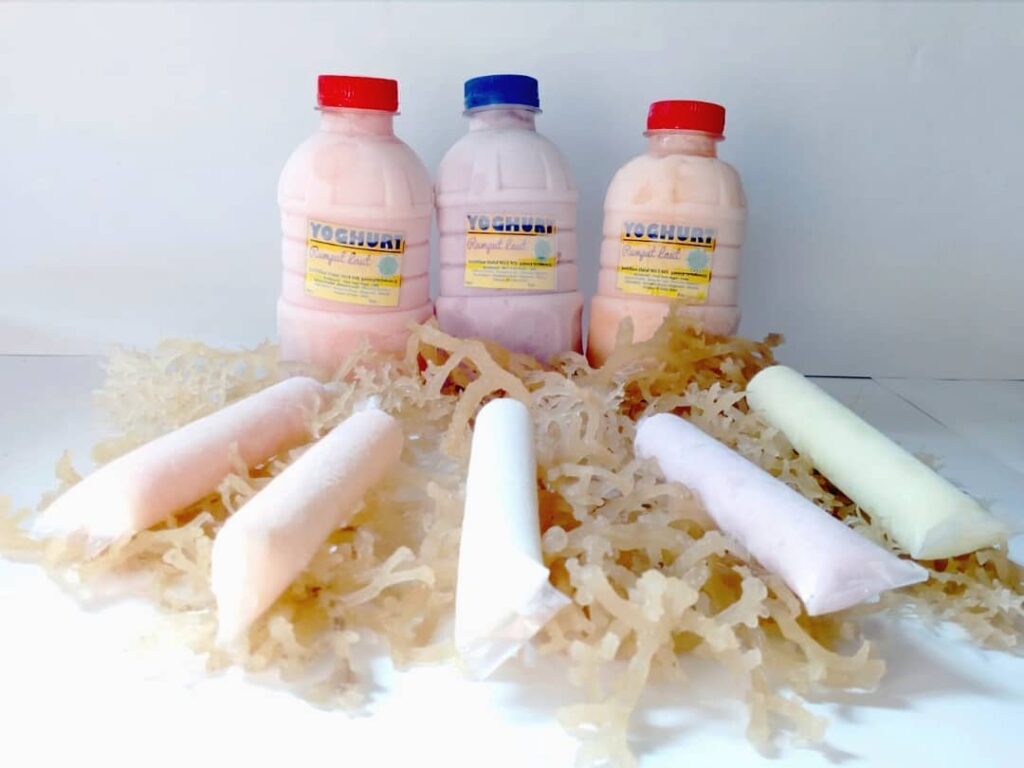
Here’s How to Grow Seaweed in Your Own Home
Seaweed is a healthy and nutritious treat that is catching on as a snack item in the United States. It’s also used in a variety of recipes to add extra nutrients to give your body an extra boost.
It’s sold commercially in paper-thin sheets that are easy to consume, but did you know that you can grow food-grade seaweed at home? If this is a snack that you enjoy eating, here is everything you need to know about how to grow seaweed in the convenience of your own home.
Seaweed is easy to grow
There are many benefits to growing seaweed at home. It’s a crop that is not hard to grow, it’s sustainable, and it’s good for you.
According to the Washington Post, if given the right growing conditions, you can raise a crop of seaweed that gains up to six inches of growth in a single day. This is enough to keep you stocked in the nutritious snack.
Related topic: Seaweed Farming a Sustainable Profitable Alternative to Traditional Agriculture
A good crop for farming
Seaweed is an excellent choice as a farmable crop. There isn’t a lot involved other than planting harvesting, and little maintenance. Seaweed does not require watering, weeding, or fertilizing. It’s a plant that is not prone to infestations of pests or plant diseases. Seaweed is also good for the environment where it is grown.
Choice of different varieties
Seaweed comes in a variety of different forms. There are more than 3,500 different kinds and varieties. This makes the biggest problem for getting started choosing the best for your situation.
On the plus side, you can choose a seaweed that thrives in your environment, e.g. the type of water in your locale, but on the downside, it can spread quickly and take over a water environment.
They’re crazy invasive, but if you’re farming seaweed, this could be a good thing. Seaweed is one of the most highly farmable plants that give it excellent potential for being a profitable venture, depending on the scale of the operation.
Environmental benefits of seaweed farming
Seaweed is a plant that helps to clean the water. The plants and the chemical reactions that it produces helps to rid the water it grows in of toxins. This is one motivation to growing seaweed at home if you’re in the right location to do so.
The plants do not require much in the way of resources and there is little to do to see them thrive. Seaweed has long been regarded for use as a food supplement as well as for medicinal purposes. It’s a good cash crop if you raise it in bulk or a tasty snack if you keep your operation small for your own consumption.
Also read: Gracilaria, Graceful Redweed
Steps for growing seaweed in your own home
There isn’t a lot that you need to do to start your own seaweed farm in your own house. A small area that gives you enough seaweed for your own use won’t’ take up much space. You will need to do some preparation.
The startup is the most involved part of growing seaweed. It’s a little different than commercial seaweed farms but you should be able to grow enough to stock up on a good supply that just keeps on producing. Here is how Hunker recommends growing seaweed in your house.
Step 1: Gather your supplies – You will need to buy a large aquarium to start your home seaweed farm. You can use any size aquarium that you like. Next, buy an aquarium heater to keep the water at the ideal growing temperature. You’ll also need to find a large rock that is wide yet short. Place the rock in the bottom of the aquarium.
Step 2: – Fill a large pot with water and put it on the stove. For each gallon of water, add one teaspoon of table sale. Heat the water over medium heat until it reaches a temperature of 81 degrees Fahrenheit. Make sure that the salt is completely dissolved. You can stir the water to help speed the process. You may need to repeat this process until you have enough water to fill your aquarium.
Step 3: Fill the aquarium – Place a thermometer in the aquarium in a spot that makes it easy to read from the outside. Allow the water to cool down until it reaches 72 degrees. This is the ideal temperature for growing seaweed at home. Put the water heater in the tank and adjust it to keep the water at a constant temperature of 72 degrees F.
Related to seaweed: Seaweed Farming: Risks, Potential of The Miracle Crop
Step 4: Plant your seaweed – Obtain your stock of seaweed plants and place the plants in the water. You will see plant matter near the bottom of each stock that looks like a mass of roots. This is the part that you need to put at the bottom of the tank onto the rock. It is called the holdfast. It is the part of the seaweed that attaches to the rock and anchors it firmly in place. Sometimes the holdfast will attach to the rock immediately, but if it doesn’t you may need to place a smaller rock on top to hold it in place until it attaches on its own. This part must be held to the rock.
Step 5: Fertilizing – Unlike commercial seaweed farms, the plants that you grow at home will need to be fertilized. In the wild, seaweed takes nutrients out of bodies of water, but in a home aquarium, there are not nutrient sources for your crop. Follow the directions on the package to get the right amount.
Step 6: Add an air pump for circulation – According to KG Biro, it’s also important to use an air pump in your aquarium. The air pump helps to oxygenate the tank so your seaweed will thrive and reproduce for a consistent supply of edible plant matter.
Benefits of home-grown seaweed
According to Seasteading, seaweed can be used in a variety of recipes. It’s used in tortilla chips, ice cream, bread, and even beer. It can also be used as a stand-alone snack on its own. Seaweed is filled with nutritional benefits. It’s an excellent source of fiber, iron, magnesium, and a host of vitamins that are good for your body.
Conclusion
Seaweed is easy to grow in your own home. It provides you with a healthy snack alternative. It’s a fast-growing plant that you can harvest at will whenever you want to enjoy fresh seaweed in a recipe. You can prepare it in a variety of different ways and it’s loaded with health benefits.
More info: Innovators Develop Seaweed Based Alternatives to Plastic Food Wrappers
This article was first published by Nimvo. The accuracy of the information contained therein is not the responsibility of Seaweednetwork.

















